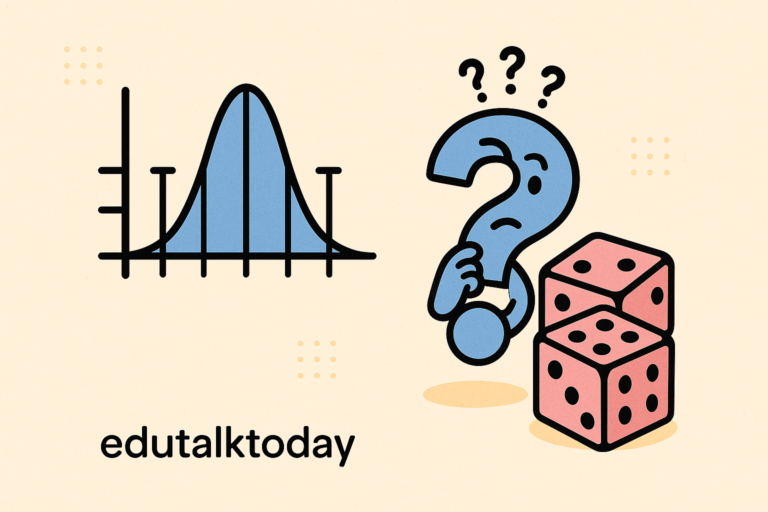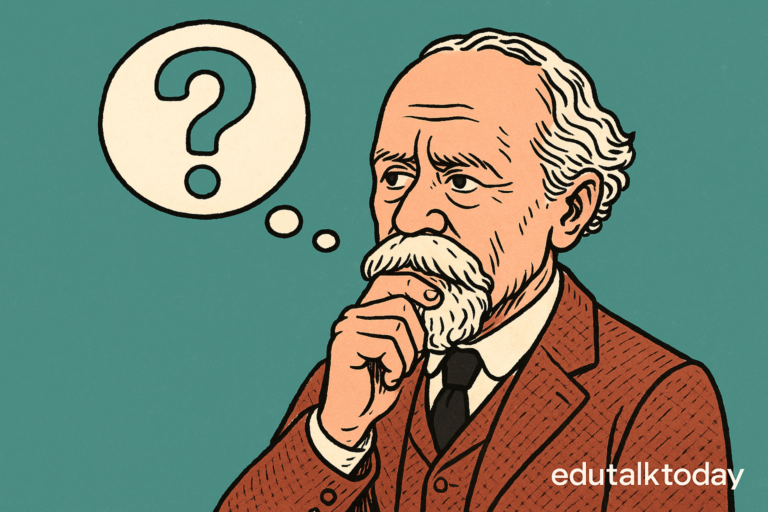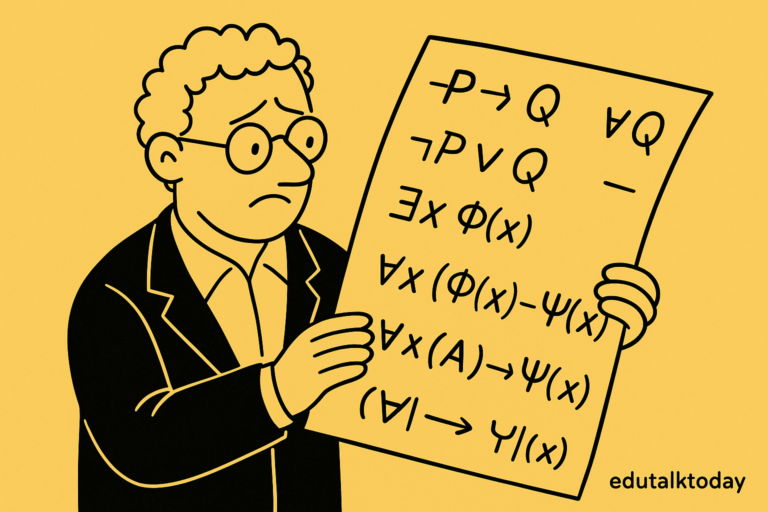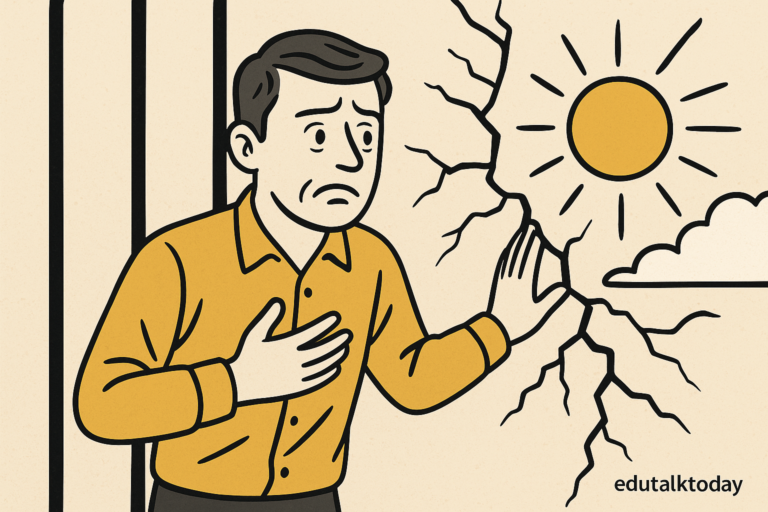How a pragmatist copes when you can’t know everything?

We all know what it feels like to be drowning in information but still not have enough to feel confident.
The dirty little secret of being an “expert” is that expertise doesn’t actually erase uncertainty. If anything, it makes you more aware of the gaps. The deeper you go in a field, the more you realize how much you’ll never have the time (or brain space) to fully master.
So the real question becomes: how do we keep making solid decisions when we’re never working with the full picture?
Some people chase the illusion of total control, but the pragmatist says, “Forget it—that’s impossible.” Instead, we look for ways to act effectively without perfect knowledge. That’s not lowering standards—it’s shifting the frame. We can’t know everything, but we can know enough to move, adapt, and keep building.
Living with incomplete knowledge
Here’s the thing: if you’ve been in your field long enough, you know the comforting fantasy of “I’ll study everything until I’m sure” just doesn’t hold up. The world moves too fast, data points contradict each other, and resources—time, energy, money—are always finite.
The pragmatic path is about accepting that knowledge is bounded, and then figuring out how to operate at a high level within those bounds.
Why humility is underrated among experts
Experts don’t like to admit limits. We’ve built reputations on competence, and competence implies control. But the truth is, humility is the ultimate expert move.
Think of medicine: a physician can’t possibly know every detail about every disease, every drug interaction, every patient nuance. That’s why the best doctors are the ones who say, “I don’t know yet, but here’s how we’ll find out.” They don’t pretend omniscience—they’re pragmatic about uncertainty.
Humility isn’t about downplaying knowledge; it’s about acknowledging complexity. In fact, it’s what separates the rigid “know-it-alls” from the adaptive problem-solvers.
The former collapse the moment reality doesn’t match the textbook. The latter bend, pivot, and keep going.
The power of satisficing
Herbert Simon’s concept of satisficing is one of those underappreciated gems. Instead of optimizing for the perfect decision (which is often impossible in the real world), you aim for the decision that is good enough to meet your needs and constraints.
This doesn’t mean being sloppy—it means being realistic. Imagine an engineer working on a new safety mechanism for autonomous vehicles. Perfect safety is mathematically unachievable—there will always be edge cases.
So what do you do? You satisfice: you design a system that handles 99.9% of cases reliably, then document the 0.1% edge conditions. You don’t wait for the impossible guarantee before shipping; you launch, monitor, and improve.
This isn’t just a technical strategy—it’s a survival strategy.
Satisficing keeps you from analysis paralysis, which is the death of progress in expert fields.
Experts as navigators, not encyclopedias
I’ve noticed a mental shift among high-performing experts: they stop seeing themselves as walking encyclopedias and start seeing themselves as navigators. They don’t have every answer, but they know how to find, evaluate, and apply knowledge in motion.
Take data science. No one can keep up with every new algorithm, framework, or dataset. But a pragmatic data scientist knows how to triage: is this new technique truly relevant to my problem, or just hype? Should I spend three weeks diving in, or grab the broad strokes and move on? This navigator mindset lets them operate with partial maps, trusting they can fill in detail when the terrain demands it.
When ignorance is actually useful
Here’s something we don’t say out loud enough: sometimes not knowing everything is an advantage. In innovation, deep expertise can create blinders. The pragmatic expert allows a little ignorance to spark creativity.
For example, in biotech, researchers coming from computer science backgrounds have revolutionized areas like protein folding and drug discovery. They didn’t know “all the rules,” which meant they weren’t shackled by the field’s long-held assumptions. Their partial knowledge gave them freedom to experiment where insiders might have hesitated.
This doesn’t mean we should glorify ignorance—it means we should recognize that expertise plus selective openness can be more powerful than exhaustive mastery.
The emotional side of uncertainty
Let’s be real: working with incomplete knowledge isn’t just an intellectual puzzle—it’s an emotional grind. Anxiety, impostor syndrome, and decision fatigue hit hardest when you’re hyper-aware of what you don’t know. Pragmatists cope by reframing uncertainty not as a flaw but as the natural environment of expertise.
I’ve seen this in aerospace engineering teams, where no simulation or test can cover every variable in flight. Instead of despairing, the best teams treat uncertainty like a partner: “We don’t have the full picture, but we’ve stress-tested enough to trust our system.” That mindset keeps them calm, collaborative, and creative under pressure.
The recalibration that matters
So what does living with incomplete knowledge boil down to? It’s a recalibration of identity. Being an expert isn’t about being the final authority—it’s about being a reliable guide in an unpredictable landscape. It’s about making peace with ambiguity while still holding yourself to a high bar.
And honestly, that’s the heart of pragmatic expertise: you stop obsessing about what’s missing and start building confidence in how you act with what you have. That shift doesn’t just make you more effective—it makes you more human, and more resilient, in a world that will always outpace total knowledge.
Practical ways to cope
At some point, theory only takes us so far—you need tools you can actually reach for when the gaps in knowledge start showing up in the middle of your day. Pragmatists don’t try to cover every base; instead, they build habits and strategies that keep them moving forward even when the picture is blurry. Some of these look deceptively simple on paper, but in practice they’re what separate the people who freeze from the people who thrive.
Prioritize signal over noise
We’ve all been there: drowning in Slack threads, papers, reports, dashboards—so much input that you could spend a week just filtering it. Pragmatists learn to tell the difference between information that actually affects the decision and background static.
A software architect once told me she keeps a rule of thumb: if the information won’t change the design decision she’s about to make, she sets it aside. Does she risk missing something? Sure. But more often, it saves her from wasting time on “interesting but irrelevant.” The payoff isn’t just efficiency—it’s clarity.
Leverage peer expertise
Nobody is an island, and in complex domains, your network is part of your brain. Pragmatists don’t try to hoard knowledge; they build reliable connections with others who complement their blind spots.
In medicine, this shows up in multidisciplinary tumor boards where oncologists, radiologists, surgeons, and nurses put their perspectives together. No single doctor can hold the full picture of a cancer case, but collectively, they cover far more ground. For pragmatists, asking for help isn’t a weakness; it’s a recognition of how expertise actually works in the real world.
Operationalize heuristics
Heuristics sometimes get a bad rap as “shortcuts,” but when you’re operating under uncertainty, they’re essential. The key is that pragmatists design their heuristics intentionally—they’re not just gut feelings, they’re tested rules of thumb.
Pilots are masters at this. The aviation world is full of checklists and heuristics like “aviate, navigate, communicate.” No matter the emergency, that simple order of operations guides their actions. Is it perfect? No. But it’s saved countless lives because it reduces cognitive load when stress spikes. Pragmatists in any field can do the same: codify what’s worked before into heuristics that carry you through when you don’t have time to calculate every variable.
Iterate and course-correct
The idea that you’ll make the right call once and for all is a comforting fantasy. Pragmatists treat decisions as provisional moves—you make the best choice with the information you’ve got, then adjust as reality unfolds.
Think about product development teams running A/B tests. They don’t expect to launch a perfect feature. Instead, they launch a version, watch how users respond, and pivot as necessary. Each decision is a learning step, not a final verdict. This iterative approach doesn’t just make better products—it makes for saner experts, because the pressure to be perfect disappears.
Document ignorance deliberately
This one surprises people: pragmatists actually write down what they don’t know. It might sound counterintuitive—why keep a record of your blind spots? But this practice is powerful because it turns ignorance into an object you can manage.
I’ve seen engineering teams keep “assumption logs” where they list every uncertainty: unknowns in user behavior, missing performance data, potential risks. By externalizing those gaps, they prevent two classic traps: forgetting what they didn’t know, or unconsciously treating assumptions as facts. Even better, when new data arrives, they can quickly see which assumptions to revisit.
Choose sufficiency, not perfection
One thread running through all these strategies is the idea of sufficiency: knowing when you have enough to act. Perfection is always tempting—especially for experts who take pride in mastery—but pragmatists recognize it as a trap.
A friend who works in emergency response once told me, “In a disaster, if you wait until you know everything, people die. You act on 60 percent and adjust.” That’s not recklessness—it’s reality. The skill lies in calibrating what “enough” looks like in your specific context. For a surgeon, it might mean waiting for critical lab results before operating but not obsessing over marginally relevant data. For a policymaker, it might mean acting on the best available models while accepting a margin of uncertainty.
Pragmatic strategy is a mindset shift
What ties all of this together is that pragmatists don’t just use tactics; they shift how they see decisions under uncertainty. They stop asking, “How can I know everything?” and start asking, “How can I move forward effectively with what I know now?” That mindset makes every one of these strategies—filtering, leaning on peers, heuristics, iteration, documenting ignorance—fall into place naturally.
Shifting from control to navigation
When you accept that you can’t know everything, you start to see expertise differently. It’s not about having a map that covers the whole territory; it’s about learning how to navigate confidently with partial maps. This shift doesn’t come easy—especially for people who’ve spent years chasing mastery—but it opens up a new way of working that’s both liberating and more aligned with reality.
Control is a mirage
Let’s face it, control feels good. We love that sense of “I’ve got it all figured out.” But in fast-changing environments, that feeling is usually an illusion. Think of cybersecurity: no team can guarantee absolute safety. New vulnerabilities appear daily, attackers change tactics constantly. A company that insists on total control will overspend, overbuild, and still end up blindsided.
Pragmatists don’t chase control—they chase resilience. They accept breaches will happen, and instead of promising perfection, they focus on response, recovery, and learning loops. That shift from control to navigation is what keeps them effective.
Uncertainty as a fuel for innovation
There’s something paradoxical here: the very uncertainty that frustrates us also creates the conditions for breakthroughs. If you knew everything, you’d never need to experiment, never take risks, never stumble into new ideas. Pragmatists harness that.
Look at the history of space exploration. Apollo engineers had incomplete knowledge of lunar conditions, spacecraft tolerances, and human response. If they had waited until every unknown was resolved, they’d never have launched. Instead, they treated uncertainty as a design constraint that forced creativity. The result wasn’t perfect safety—but it was one of humanity’s boldest achievements.
The psychology of navigation
Of course, shifting from control to navigation isn’t just technical—it’s deeply psychological. Experts often tie their identity to mastery, so admitting “I don’t know” feels like weakness. But pragmatists flip that script. They see admitting uncertainty as a mark of seriousness, not incompetence.
One technique I’ve seen used in high-stakes teams is normalizing phrases like “Here’s what we know, here’s what we don’t know, and here’s how we’ll move forward.” It creates a culture where uncertainty is named and shared, not hidden. That culture doesn’t just reduce anxiety—it builds trust, because colleagues know you’re not bluffing.
The freedom of flexibility
When you let go of the illusion of control, something surprising happens: you actually feel lighter. You don’t carry the impossible burden of knowing everything; you just focus on steering well in the moment.
I once worked with a project manager in renewable energy who embodied this. She said, “Every plan I make is a draft. The point isn’t to predict perfectly—it’s to stay nimble when reality shifts.” Watching her lead was like watching someone surf. She didn’t fight the waves—she moved with them. And the team followed her because her confidence wasn’t in control, but in adaptability.
From knowing to learning
The ultimate mindset shift is this: pragmatists stop measuring themselves by what they know and start measuring themselves by how they learn. Knowledge is static, but learning is dynamic. In a world where the unknown keeps expanding, learning is the only compass that works.
Experts who embrace this shift not only perform better—they also last longer in their fields. They avoid burnout because they’re not chasing the impossible. They stay curious, because every gap is an opportunity. And they become magnets for collaboration, because others trust their openness.
Final Thoughts
If there’s one thing pragmatists understand, it’s that expertise isn’t about perfect knowledge—it’s about effective action in imperfect conditions. That’s both humbling and empowering. Humbling, because you realize you’ll never master it all. Empowering, because you discover that you don’t need to.
The pragmatist’s way isn’t about lowering the bar; it’s about raising your adaptability. You learn to filter noise, lean on others, codify heuristics, act provisionally, and navigate with honesty about what’s missing. And in doing so, you transform uncertainty from a threat into the very condition that keeps you sharp, creative, and resilient.
In the end, you don’t cope by knowing everything—you cope by learning how to move, again and again, when you can’t.





